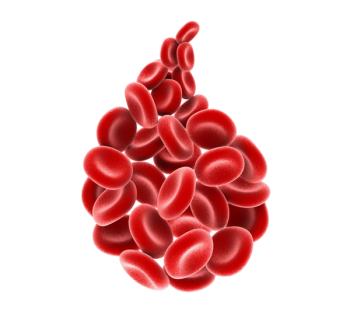
Darolutamide Does Not Alter Metastatic Progression Pattern in nmCRPC in ARAMIS
Metastatic progression pattern with darolutamide appears to be unaltered in nonmetastatic castration-resistant prostate cancer, despite the agent resulting in better survival outcomes.
Post-hoc analysis of the phase 3 ARAMIS trial (NCT02200614) revealed that darolutamide (Nubeqa) was able to significantly reduce the risk of metastatic progression and improve overall survival compared with placebo without altering the metastatic progression pattern in patients with nonmetastatic castration-resistant prostate cancer (nmCRPC), according to data presented at the
Previously reported findings of the trial showed that treatment with darolutamide significantly prolonged metastasis-free survival by nearly 2 years and reduced the risk of death by 31% vs placebo with favorable tolerability in patients with nmCRPC.2,3
For the current analysis, the investigators, led by Alicia K. Morgans, MD, MPH, a genitourinary medical oncologist and the medical director of the Survivorship Program at Dana-Farber Cancer Institute in Boston, Massachusetts, conducted post hoc analyses of ARAMIS “evaluate the association between metastatic progression with prostate-specific antigen (PSA) and clinical progression and to describe the distribution of metastatic progression between groups,” according to the study’s abstract.
The investigators randomized patients 2:1 to darolutamide 600 mg twice daily or placebo while continuing treatment with androgen deprivation therapy. They performed descriptive analyses using the primary data cutoff for the double-blind period. Central review of conventional radiographic imaging every 16 weeks was used to determine post-baseline metastases.
The investigators observed metastatic progression in 130/955 patients treated with darolutamide (13.6%) vs 158/554 patients treated with placebo (28.5%). In the darolutamide arm, 46% of metastatic progression was bone only, 32% was distant lymph node only, and 22% was mixed metastatic types. In the placebo arm, 39% of metastatic progression was bone only, 40% was distant lymph node only, and 21% was mixed metastatic types.
Median time from initial diagnosis to study treatment was shorter in patients with metastatic progression (darolutamide arm, 86.2 months; placebo arm, 74.4 months) compared with the overall ARAMIS study population (86.2 and 84.2 months, respectively). For patients with metastatic progression, median PSA levels at baseline were similar between the 2 groups at 12.6 ng/mL in the darolutamide arm vs 15.1 ng/mL but were lower in the darolutamide patients before metastasis at 16.7 ng/mL compared with patients receiving placebo (48.0 ng/mL).
“Among patients with metastatic progression, PSA progression before metastasis occurred in 55.6% (160/288) of patients, occurring in fewer darolutamide vs placebo patients (45.4% vs 63.9%),” wrote the investigators in their poster.
In addition, the median time between PSA progression and metastasis was 7.0 months for darolutamide compared with 5.6 months for placebo. Pain progression before metastasis was 16.9% and 17.7% for the darolutamide and placebo arms, respectively.
“In patients with nmCRPC, darolutamide significantly reduced the risk of metastatic progression and improved overall survival compared with placebo without changing the pattern of metastatic progression….These results support the use of both imaging PSA monitoring to properly identify disease progression in patients with nmCRPC,” wrote the investigators in their conclusion.
References
- Morgans AK, Sweeney C, Wallis CJD, et al. Progression patterns by types of metastatic spread, prostate-specific antigen (PSA), and clinical symptoms: Post-hoc analyses of ARAMIS. J Clin Oncol. 2022;40(suppl 16):5044. doi:10.1200/JCO.2022.40.16_suppl.5044
- Fizazi K, Shore N, Tammela TL, et al. Darolutamide in nonmetastatic, castration-resistant prostate cancer. N Engl J Med. 2019;380(13):1235-1246. doi:10.1056/NEJMoa1815671
- Fizazi K, Shore N, Temmela TL, et al. Nonmetastatic, castration-resistant prostate cancer and survival with darolutamide. N Engl J Med. 2020;383(11):1040-1049. doi:10.1056/NEJMoa2001342.
Newsletter
Stay up to date on recent advances in the multidisciplinary approach to cancer.




















































































